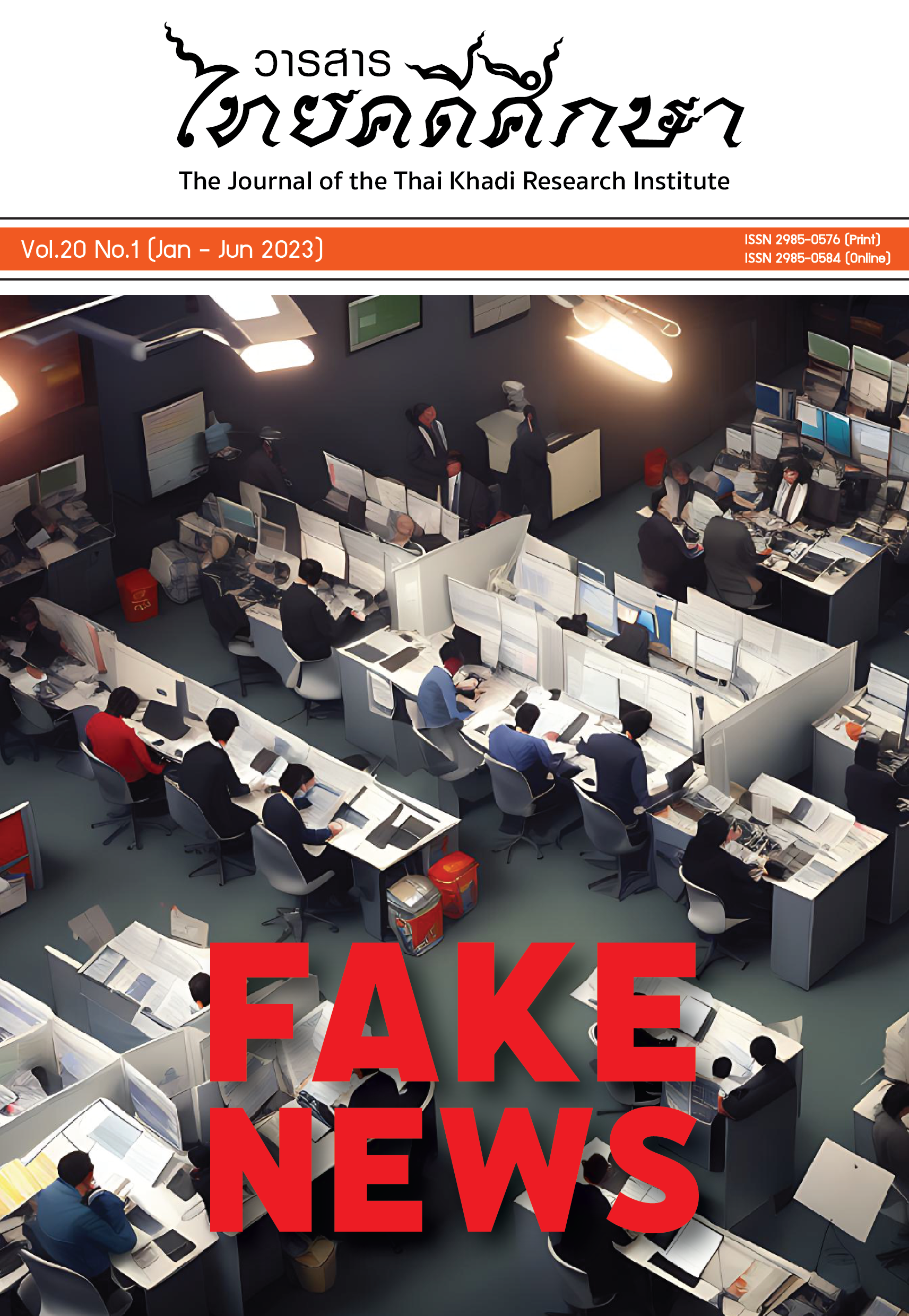ภาษาสื่ออัตลักษณ์ไทใหญ่ ในผลิตภัณฑ์สินค้า
Main Article Content
บทคัดย่อ
งานวิจัยนี้มีวัตถุประสงค์ในการศึกษา 2 ประเด็น ได้แก่ 1) เพื่อศึกษาภาษา ไทใหญ่ที่สื่อถึงอัตลักษณ์ของชาวไทใหญ่ที่ปรากฏในผลิตภัณฑ์สินค้าของชาวไทใหญ่ 2) เพื่อศึกษาปัจจัยที่ทำให้เกิดการแสดงออกทางอัตลักษณ์ของชาวไทใหญ่ผ่านผลิตภัณฑ์สินค้าต่าง ๆ โดยศึกษาในพื้นที่ 2 ชุมชน ได้แก่ ชุมชนไทใหญ่วัดป่าเป้า และชุมชนไทใหญ่วัดกู่เต้า ซึ่งอยู่ในเขตอำเภอเมืองเชียงใหม่ จังหวัดเชียงใหม่ การศึกษานี้ครอบคลุมระยะเวลาที่มีการจำหน่ายสินค้าในงานประเพณีต่าง ๆ ที่จัดขึ้นภายในวัดทั้งสองแห่งดังกล่าว ใน พ.ศ. 2562 เป็นระยะเวลา 1 ปี ซึ่งจากการศึกษาพบว่า ในปัจจุบันชาวไทใหญ่ที่อาศัยอยู่ในจังหวัดเชียงใหม่ในเขตอำเภอเมืองเชียงใหม่ ได้แก่ บริเวณวัดป่าเป้า และวัดกู่เต้า มีทั้งชาวไทใหญ่ที่เพิ่งมาอยู่ใหม่ (ไตใหม่) และชาวไทใหญ่ที่อยู่มาแต่ดั้งเดิม (ไตเก่า) ทางด้านภาษาไทใหญ่ที่สื่อถึงอัตลักษณ์ของชาวไทใหญ่ที่ปรากฏในผลิตภัณฑ์สินค้า จากการศึกษาพบใน 6 ประเด็น ได้แก่ 1. ภาษาไทใหญ่ที่สื่อถึงประวัติศาสตร์และการเมือง 2. ภาษาไทใหญ่ที่สื่อถึงพื้นที่ของอาณาจักรไทใหญ่ในอดีต 3. ภาษาไทใหญ่ที่สื่อถึงประเพณีวัฒนธรรม 4. ภาษาไทใหญ่ที่สื่อถึงสิ่งที่ปรารถนาและความรู้สึก 5. การปรับเปลี่ยนภาษาไทใหญ่บนผลิตภัณฑ์สินค้า 6. การใช้สัญลักษณ์ในการสื่อความ ทางด้านปัจจัยที่ทำให้เกิดการแสดงออกทางอัตลักษณ์ของชาวไทใหญ่ผ่านผลิตภัณฑ์สินค้านั้น มี 3 ปัจจัย ได้แก่ 1. ปัจจัยด้านการเมืองการปกครอง 2. ปัจจัยด้านการปลูกฝังทางประเพณีวัฒนธรรม 3. ปัจจัยด้านการอพยพย้ายถิ่น
Downloads
Article Details

อนุญาตภายใต้เงื่อนไข Creative Commons Attribution-NonCommercial-NoDerivatives 4.0 International License.
ผู้เขียนจะต้องลงนามในแบบฟอร์มรับรองบทความ เพื่อให้คำยืนยันความรับผิดชอบว่า บทความของผู้เขียนนั้นไม่เคยตีพิมพ์ที่ใดมาก่อน พร้อมรับทราบว่า กระบวนการส่งบทความเข้าพิจารณาและตีพิมพ์ในวารสารไทยคดีศึกษานั้น จะไม่มีการเรียกเก็บค่าใช้จ่ายในการดำเนินการ ยกเว้น ในกรณีที่ผู้เขียนขอยกเลิกการตีพิมพ์บทความในวารสารไทยคดีศึกษาไม่ว่าด้วยสาเหตุใด และหลังจากบทความนั้นเข้าสู่กระบวนการพิจารณาของผู้ทรงคุณวุฒิไปแล้ว ผู้เขียนจะต้องรับผิดชอบต่อค่าใช้จ่ายที่เกิดขึ้นในกระบวนการประเมินเป็นจำนวนเงิน 3,000 บาท (สามพันบาทถ้วน)
เอกสารอ้างอิง
Burutphat, K. (1997). Myanmar Minority. Bangkok: Rung Sin Publishing.
Kasetsiri, Ch. (2001). Myanmar History and Politics. Bangkok: Social Science and Humanities Textbook Project Foundation and Toyota Foundation.
Ongsakun, S. (2003). Full Research Report Community History Research Project in Chiang Mai: The Creation of Local History. Bangkok: The Thailand Research Fund.
Phadungchewit, J. (2007). Culture Communication and Identity. Bangkok: Chulalongkorn Publishing.
Suntivutimetee, W. (2002). Tai Yai Identity at Thai - Burma border Case study: Piang Luang Village Amphoe Viang Hang, Chiang Mai. (Master’s thesis, Thammasat University).
Terwiel, B.J. & Diller, A. (1990). Native Thais were not here. Bangkok: Muang Boran Publishing.
Wichasin, R. (2003). Knowing and Reading Shan Script. Chiang Mai: Department of Thai, Faculty of Humanity, Chiang Mai University.
Withayasakpun, S. (2001). Shan History. Bangkok: Sang San Publishing.


